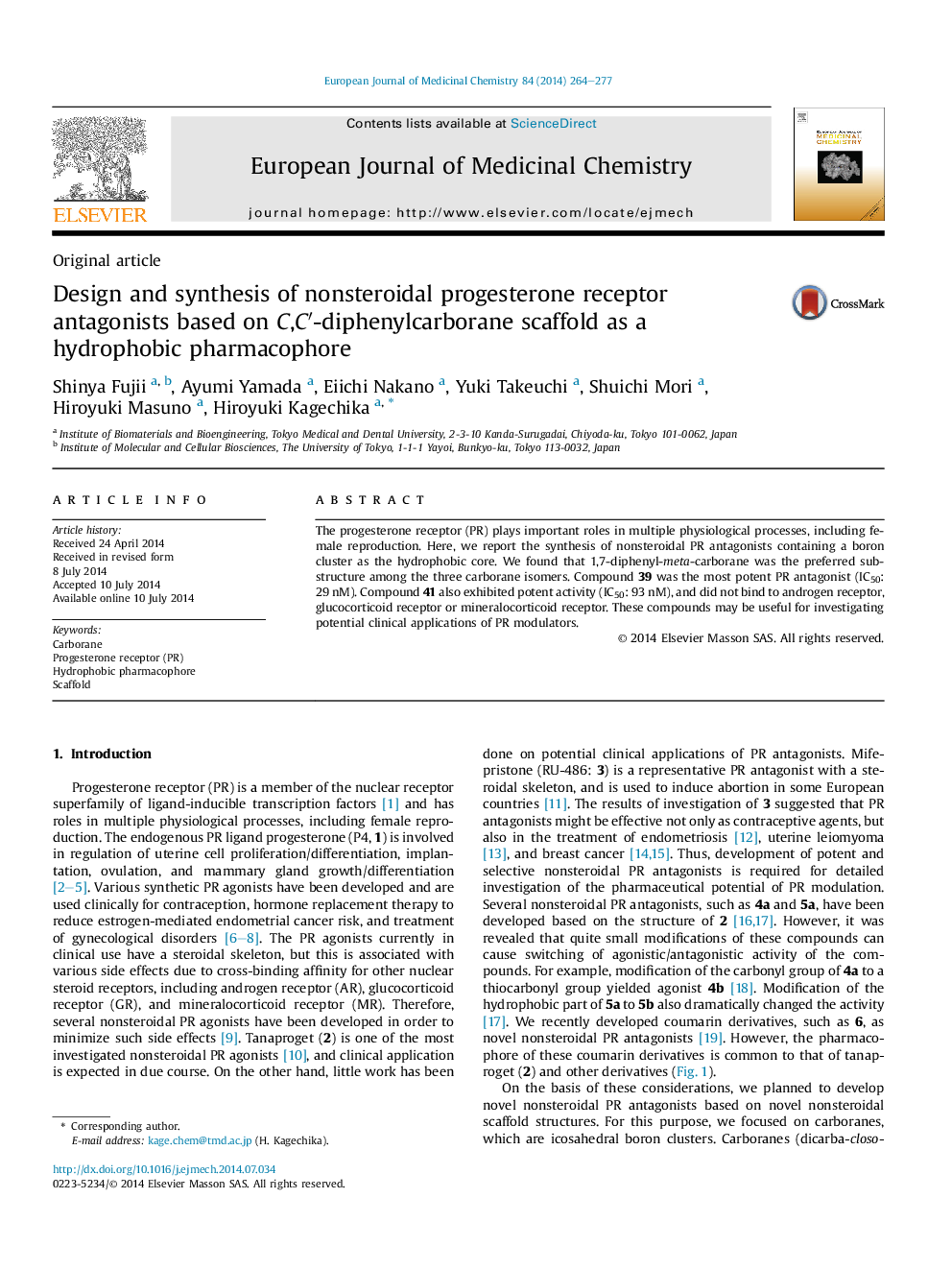| Article ID | Journal | Published Year | Pages | File Type |
|---|---|---|---|---|
| 1395608 | European Journal of Medicinal Chemistry | 2014 | 14 Pages |
•Three series of C,C′-diphenylcarborane derivatives were synthesized.•1,7-Diphenyl-m-carborane substructure was versatile scaffold of PR antagonist.•Compound 39 exhibited potent PR antagonistic activity with an IC50 value of 29 nM.•m-Carborane derivatives exhibited PR selectivity over other steroid receptors.•Docking simulation suggested mechanism of antagonism.
The progesterone receptor (PR) plays important roles in multiple physiological processes, including female reproduction. Here, we report the synthesis of nonsteroidal PR antagonists containing a boron cluster as the hydrophobic core. We found that 1,7-diphenyl-meta-carborane was the preferred substructure among the three carborane isomers. Compound 39 was the most potent PR antagonist (IC50: 29 nM). Compound 41 also exhibited potent activity (IC50: 93 nM), and did not bind to androgen receptor, glucocorticoid receptor or mineralocorticoid receptor. These compounds may be useful for investigating potential clinical applications of PR modulators.
Graphical abstractFigure optionsDownload full-size imageDownload as PowerPoint slide
